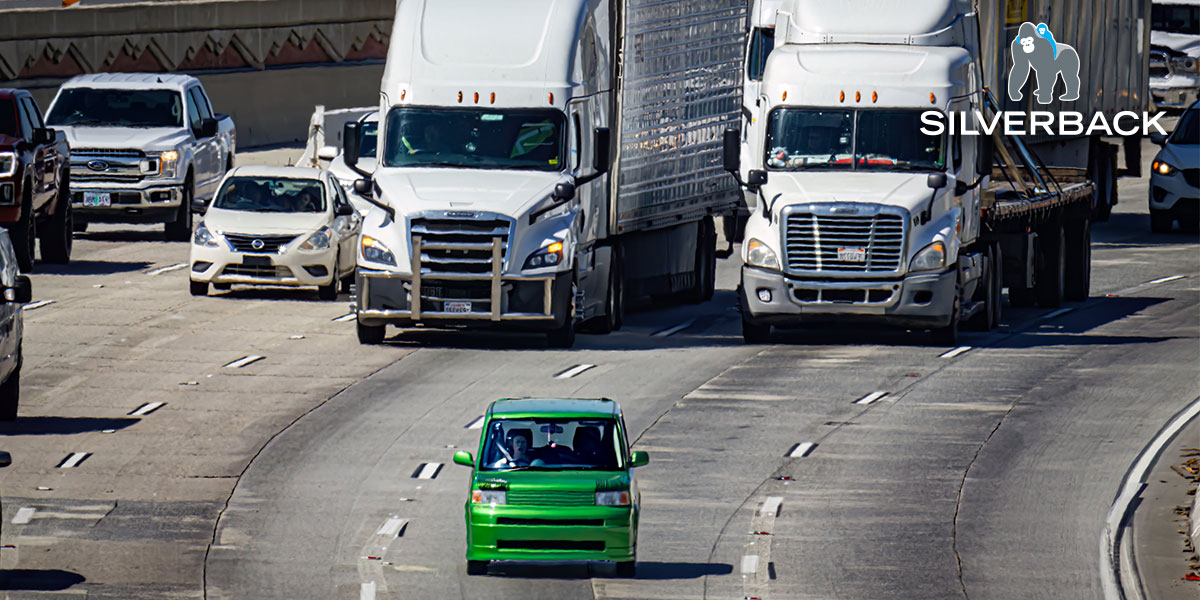Every year, a significant number of Australians are injured or even lose their lives due to crashes caused by incorrect and unrestrained loads.
These accidents can occur in various ways:
- Heavy objects unexpectedly falling from vehicles and causing harm to other vehicles or pedestrians.
- Drivers having to quickly swerve to avoid items that have already fallen off vehicles.
- Spillage on the roads from lost loads resulting in vehicles skidding and losing control.
- Unrestrained loads crashing into vehicle cabins during emergency braking.
- Vehicles are overturning due to loads shifting while cornering.
It is crucial for everyone's safety that we take the necessary precautions to secure loads properly before hitting the road. Doing so can help prevent such tragic incidents and ensure the well-being of ourselves, our employees, and others sharing the road with us.

10 Essentials for Load Restraint Safety in Australia:
- Braking at low speed increases the risk of losing a load.
When braking at low speed, there is a higher chance of losing a load compared to high-speed braking. This is because the brakes tend to grab more efficiently at low speeds.
- Weight alone is not enough to restrain a load.
The weight of the load itself does not provide sufficient friction to keep it in place during everyday driving. Using the correct load restraints is essential to secure the load properly.
- Heavy loads are just as prone to falling off as light loads.
Both heavy and light loads are subject to the same forces of gravity. Therefore, it is crucial to ensure proper load restraint for all types of loads.
- Headboards and loading racks may not be strong enough for heavy loads.
Many headboards and loading racks are not designed to fully restrain heavy loads. Extra caution should be taken when securing such loads and cargo care accessories.
- Most load restraint accidents occur at low speeds in city areas.
Most load restraint accidents happen in city areas and often occur after travelling only a short distance.
- Settling of the load can cause lashings to loosen.
When a load settles, the lashings may become loose, resulting in a reduction in tension. It is vital to regularly check the tension in the lashings both before and during the journey.
- Beware of loads on low friction or smooth surfaces.
Loads on checker plate decks can be just as slippery as smooth, flat steel decks. Extra caution should be exercised when dealing with loads on these surfaces.
- Using a tough rubber load mat can reduce the number of lashings required
Placing a durable rubber load mat underneath the load can significantly decrease the number of lashings needed to secure it.
- In some instances, additional webbing straps may be necessary for slippery loads.
If both the load and the deck are slippery, using four 50 mm webbing straps (each with a 2500 kg lashing capacity) might be necessary to secure a half-tonne load.
- Tension in lashings remains constant if the load does not shift during cornering or braking.
If you have enough tie-down lashings and the load remains stable during cornering or braking, the tension in the lashings will not increase, even under heavy braking.
The Law & Load Restraint
In Australia, the law mandates the following:
- A load on a vehicle must not be placed in a way that compromises the stability or safety of the vehicle.
- A load on a vehicle must be adequately secured to prevent it from falling or being dislodged.
- An appropriate method must be used to restrain the load on a vehicle.
- Do not use webbing assemblies that don’t comply with AS 4380 for load restraint purposes because they can have much lower ratings.
Silverback has an extensive range of load restraint equipment that covers everything from transport chain, replacement webbing straps and hooks to ratchet tie-down kits and truck winches. We also have an extensive range of shoring bars and cargo bars.
For additional details, consult the relevant legislation in your state or contact your local Silverback team for more information.
Reference:
The information in this blog has been sourced from the safety guide of the Transport Industry Safety Group with the support of VicRoads and the NTC to improve the safety of transport workers. It is one of 18 Safety Guides and other important information, including the TISG's 'A Guide to Occupational Health and Safety Transport Industry' that can be downloaded from www.vta.com.au

